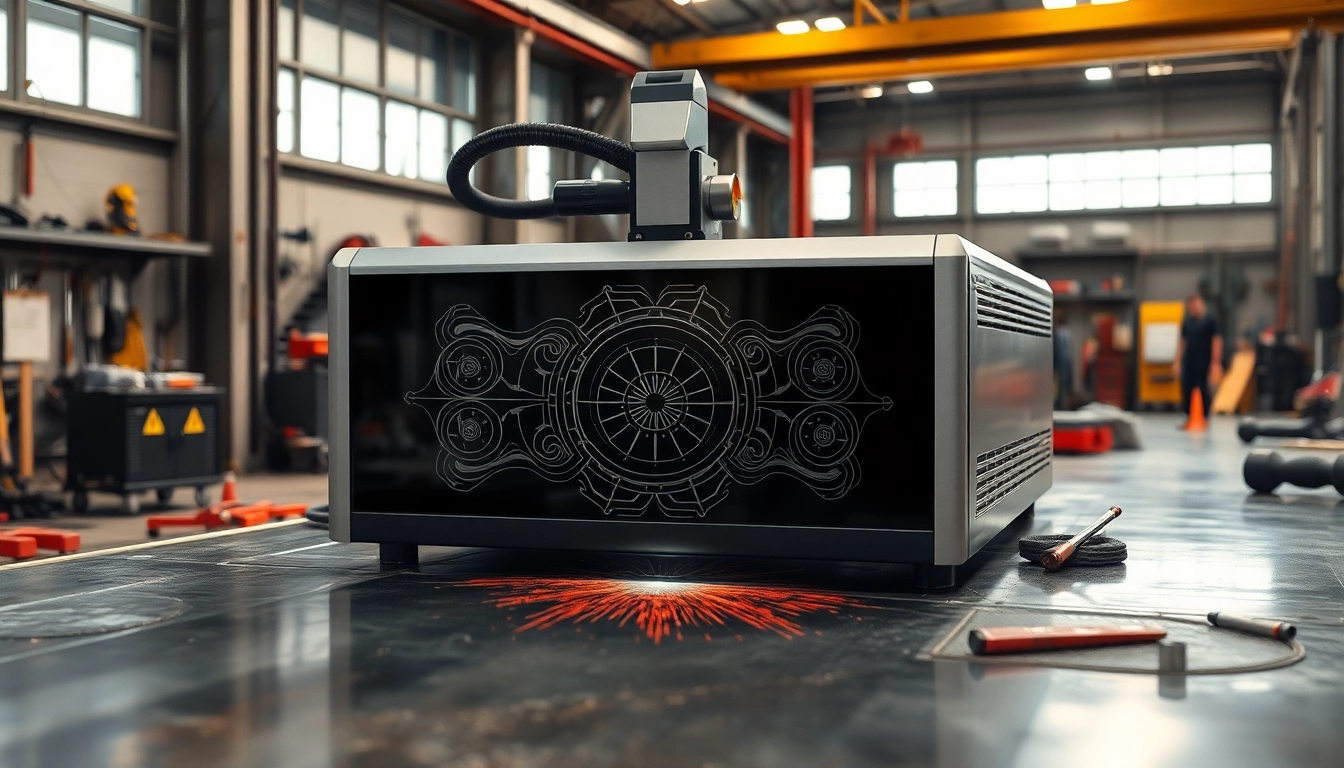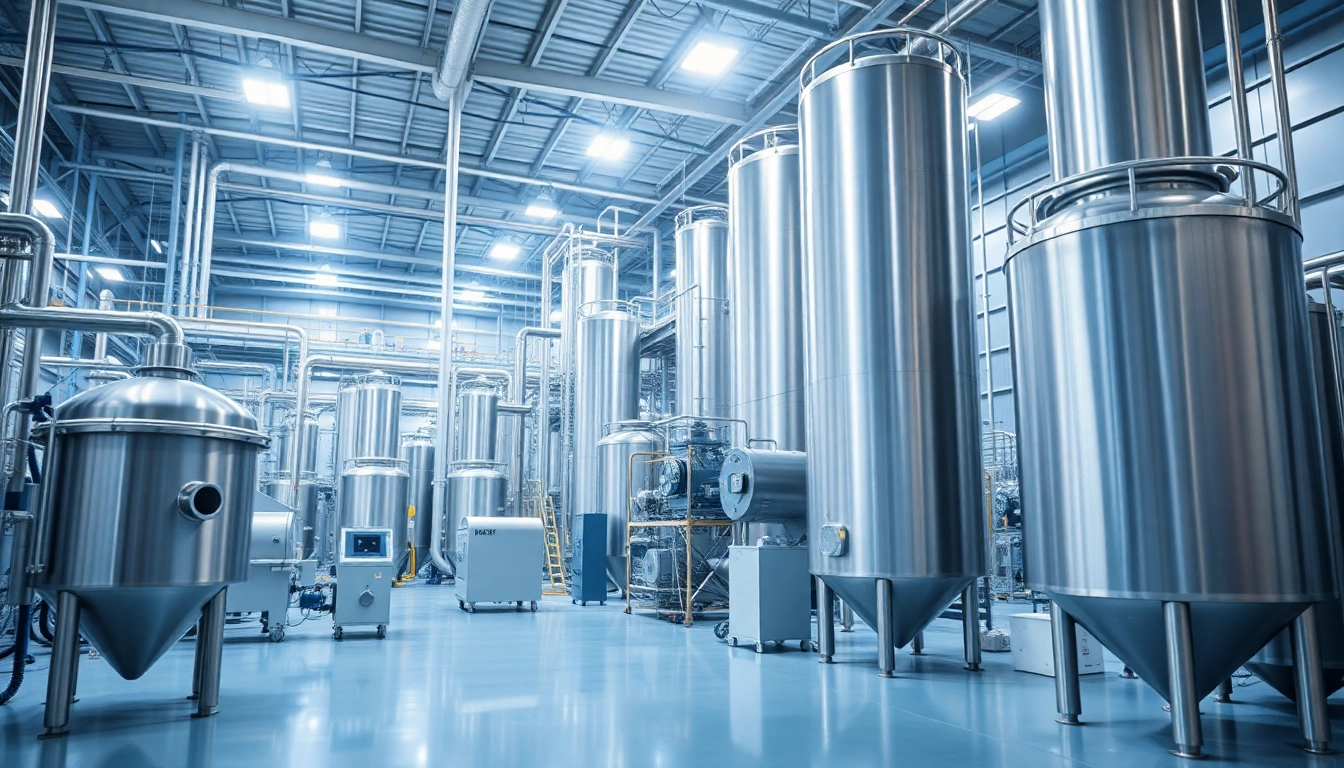Introduction to Laser Cleaning Machine Technology
Advancements in cleaning technologies have radically transformed industrial practices, with the Laser cleaning machine emerging as a frontrunner. This innovative approach to cleaning utilizes high-energy laser light to eliminate unwanted materials from surfaces, providing a method that is both efficient and versatile. As industries seek more effective, environmentally-friendly solutions, understanding the fundamentals of laser cleaning technology becomes increasingly important.
What is a Laser Cleaning Machine?
A laser cleaning machine is a device that removes contaminants, rust, paints, and other undesired materials from a surface using laser technology. It operates by directing a concentrated beam of laser light at the material, causing it to vaporize or be blown away from the surface. Different contaminants can be treated, making laser cleaning an effective solution for various applications, from restoring historical artifacts to preparing metal components for welding.
How Does a Laser Cleaning Machine Work?
Laser cleaning technology works by utilizing the principles of photonics. When the laser beam strikes the surface, it generates heat through the absorption of light by the contaminants. This energy gradually heats the material until it reaches its vaporization point. The process is carefully controlled to avoid damaging the underlying surface, making it suitable for a wide range of substrates, including metals, plastics, and stone.
Applications of Laser Cleaning Machine
Laser cleaning machines are utilized in various industries, including:
- Aerospace: For cleaning components and removing coatings without damaging underlying structures.
- Automotive: Employed in the restoration of classic cars and in the preparation of surfaces prior to painting.
- Manufacturing: Used to clean metal parts, helping to prolong the lifespan of production machinery.
- Historial Restoration: Essential for removing grease, dirt, and paint from historical monuments and artifacts without harming them.
Benefits of Using a Laser Cleaning Machine
Efficiency and Effectiveness
One of the primary benefits of a laser cleaning machine is its unparalleled efficiency. The process can be significantly quicker than traditional cleaning methods, such as sandblasting or chemical solutions. As the laser can target specific areas with precision, less time is wasted, and productivity increases. Additionally, the effectiveness of laser cleaning leads to cleaner surfaces with less risk of recontamination, making it an ideal choice for sensitive applications.
Environmentally Friendly Cleaning Solutions
In today’s industrial landscape, sustainability is crucial. Laser cleaning machines eliminate the need for harsh chemicals and solvents, making them an eco-friendly alternative. The only byproducts of the cleaning process are vaporized contaminants, which can often be safely collected and disposed of. This contributes to a lower carbon footprint and reduces compliance issues associated with hazardous waste disposal.
Cost-Effectiveness in Industrial Settings
While the initial investment for a laser cleaning machine may be significant, the long-term savings can be substantial. Reduced labor costs, decreased consumption of cleaning agents, and minimized equipment wear and tear contribute to overall cost savings. Additionally, with improved operational efficiency, many businesses find that the upfront costs are recouped quickly through increased productivity and decreased downtime associated with traditional cleaning methods.
Common Challenges in Laser Cleaning Machine Utilization
Understanding Material Compatibility
A critical consideration when implementing laser cleaning technology is material compatibility. Not every surface can withstand laser cleaning without potential damage. For instance, delicate materials such as glass or certain composites may require special attention to avoid adverse effects. Therefore, thorough analysis and testing should be conducted to ensure that the laser settings are appropriate for the specific materials in use.
Addressing Safety Concerns
While laser cleaning is a safer option compared to traditional abrasive cleaning, certain safety protocols must be enforced. The concentrated beams of light can pose a risk to eyesight, and proper protective equipment, including safety goggles and barriers, should be mandatory. Moreover, operators need to undergo training to understand the operational risks and proper usage of the equipment to ensure a safe working environment.
Training Requirements for Operators
The effective use of laser cleaning machines necessitates skilled operators who are well-trained in both the mechanical operations of the equipment and the specific applications of laser cleaning. Comprehensive training programs should cover everything from machine setup and maintenance to safe operation techniques and troubleshooting. Investing in thorough training not only enhances safety but also maximizes the return on investment in laser technology.
Best Practices for Implementing Laser Cleaning Machine
Choosing the Right Equipment
When selecting a laser cleaning machine, it’s essential to consider factors such as the type of contaminants, the surface material, and the environment in which the machine will operate. Different machines have varying power capabilities, focusing mechanisms, and mobility options. Assessing these specifications against the intended applications can help businesses find the right fit for their needs.
Maintenance Tips for Optimal Performance
Like any heavy machinery, regular maintenance is critical to ensure that a laser cleaning machine operates at peak performance. Routine checks on components, such as lenses, optics, and cooling systems, should be conducted to prevent operational downtime. Moreover, cleanings and calibrations should follow the manufacturer’s guidelines to maintain accuracy and efficiency in cleaning operations.
Integration with Existing Cleaning Processes
Integrating laser cleaning technology into existing cleaning processes can offer significant benefits. Businesses should evaluate their current cleaning protocols to identify areas where laser cleaning could enhance efficiency. A phased approach to implementation can allow for adjustments and improvements as team members adapt to the new technology, providing an opportunity to further optimize cleaning workflows.
Future Trends in Laser Cleaning Machine Technology
Innovations to Watch in Laser Technology
The field of laser cleaning technology is poised for rapid advancements. Researchers are exploring ways to enhance laser efficiency and effectiveness, including developing new wavelengths and pulse durations that can better target particular contaminants while minimizing damage to underlying surfaces. Innovations in portable laser cleaning systems are also on the rise, enabling their use in previously challenging environments, such as remote locations or hazardous contexts.
Expectations for Industry Adoption
As industries increasingly recognize the benefits of laser cleaning machines, adoption rates are expected to surge. The push towards more sustainable practices and efficiency standards will drive organizations to invest in this transformative technology. Additionally, the growth in industries requiring high-precision cleaning, such as semiconductor manufacturing and aerospace, will create greater demand for laser cleaning solutions.
Long-Term Benefits for Industrial Cleaning
The long-term benefits of adopting laser cleaning technology are multifaceted. Enhanced productivity, reduced wastage of materials, and compliance with environmental standards contribute to improved operational outcomes. Moreover, as technology continues to advance, the capabilities of laser cleaning machines will expand, offering new applications that can further cement their role as integral tools in various industries.



